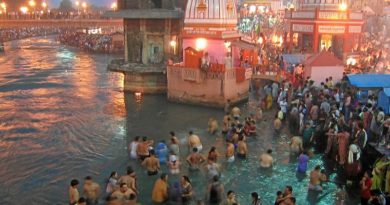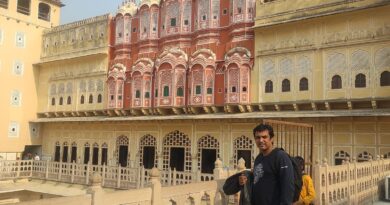Once Upon a Time in Shimla
A living museum to the Raj, Shimla does not sweep you off your feet but slowly reveals facets of her timeless beauty and ageless soul. Indeed the state capital of Himachal Pradesh initially assaulted visitors with car fumes and vistas of densely built up slopes. It is only after one spends some time in these vertiginous heights amid mountain peaks that melt into the horizon that one starts to plug into its many charms. In this, the greenest urban capital in the world, history flows espresso style, thick and fast. Perched on a 7,000ft spur of the lower Himalayas, its chalet-like houses seem to threaten to tumble off its green slopes
The house where Mohammed Ali Jinnah, the father of Pakistan, once lived, is now the National Academy of Audit and Accounts, shielded by thick cedar trees. And Rudyard Kipling came here as the Civil and Military Gazette Correspondent and researched much of his Plain Tales from the Hills during that time. In the process the petty quarrels, jealousies and flirtations that formed the fabric of Shimla society became grist for his mill.
This is where, in the days of yore, white sahibs suffering from too much East and their women, with peaches and cream complexions, were borne in curtained sedan chairs, followed by panting “coolies†carrying luggage filled with imported delicacies, bonnets, gowns and secretariat files, arrived every summer. Perched above the dust and turmoil of the plains, Shimla, snuggled under sentinel deodars and dotted with cottages and gardens, delighted the ruling elite.
Lord Amherst was the first to conceive of Shimla as a hill station, a decision that led to the development of the magnificent chain of hill resorts from Dalhousie to Darjeeling. Enamoured by the beauty and virtual inaccessibility of the spot on the crescent-shaped ridge and the rustic simplicity of his environs, the Governor General is reported to have exulted: “The Emperor of China and I govern half the human race and yet have time to breakfast.â€
In 1864 Shimla became the summer capital of the Raj and popular as a resort for philandering and frivolity where bachelors and unattached women would come in search of permanent or semi-permanent commitments. Here they would stroll down the mall where subject princes, mighty western nobles and travellers from far-flung countries used to strut. Even today it is fragrant with the perfume of pines and has a backdrop of mountain peaks that stand with their heads above the clouds.
Once the haunt of the pleasure seeker and the flirt, the mall today flaunts stately Punjabi beauties and pink-cheeked Himachali lasses. Tourists mingle with the slant-eyed people of the hills and the occasional lama with lowered eyes turning a prayer wheel slips past people gossiping at Scandal Point.
Bakeries showcased delectable breads and pastries; ice cream parlours and low-slung, slate-roofed homes jostled with shops that sold woollies. A Barista and even a Post Office were located in Tudor style buildings and there were photography studios with pictures of ardent honeymooners who had frozen memorable moments on film for posterity. The Town Hall where the Gaiety Theatre is located is being restored. One may even sit in the wood-panelled Simla Amateur Dramatic Club and sip cups of tea.
At the far end of the mall is Observatory Hill crowned by the Viceregal Lodge, now the Indian Institute of Advanced Study. Said to be one of the most flamboyant edifices of the Empire, the grey stone building is offset by green parkland and a stately oak tree in front of it. Built in the Scottish baronial style by architect Henry Irwin for Lord Dufferin, this legacy of the Raj has an air of spooky grandeur.
Within these portals, inlayed with rich Burma teak, the decision to partition the country took place. It is said that when Lord Mountbatten asked Jawaharlal Nehru and Mohammed Ali Jinnah if they favoured partitioning the country Jinnah nodded while Nehru shrugged. And the wisteria-cloaked stones of the Viceregal Lodge remain silent though they guard untold secrets of what went on in the tumultuous past.
Fact File Delhi, the closest airport, is well connected by road and rail with Shimla and the historic toy train from Kalka to Shimla (six hours) is a joy ride for nostalgic history buffs.
The hill station has a spectrum of accommodation including the classy Oberoi Cecil and the Oberoi Clarke’s.
Shimla is an ideal base to explore the many other charms of Himachal Pradesh: Kufri, Naldehra, Kulu, Manali…


